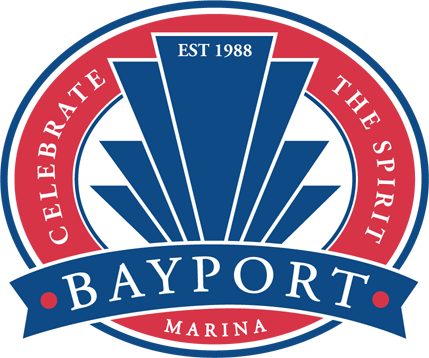Fast Facts about the River
The St. Croix River boasts of having 41 different types of native mussels making it one of the most diverse mussel watersheds in the world! Mussel reproduction is a fascinating process and not only requires male and female mussels but also fish to carry the mussel larvae. Once the larvae have been fertilized the female lets it float out on a “lure” in order to attract fish. Many muscles only want to attract a certain species of fish, and when said fish comes along the larvae are expelled onto the fish’s gills or fins where they stay until they have developed into a juvenile mussel. To learn more, visit the U.S. Fish & Wildlife Service – Endangered Species page on mussels.
Ways to Protect the River
Always clean, drain, and dry your boat and other recreational equipment if you move between water bodies. Zebra mussel veligers – the larval life stage of zebra mussels – are microscopic, and a single cup of water can transport hundreds of them.
The St. Croix River Association is dedicated to preventing the spread of aquatic invasive species as we protect, restore and celebrate the St. Croix River and its watershed.
Learn more about our programs and ways you can get involved by visiting our website at stcroixriverassociation.org.
You can learn more about these “Living Rocks” at the MN Department of Natural Resources website.
U.S. Fish & Wildlife Services – Endangered Species
America’s Mussels: Silent Sentinels
America’s Mussels, or clams, are a group of animals so inconspicuous they are often mistaken for rocks. Laying on the bottom of lakes, rivers, and creeks, they rarely move and eat by filtering water for microscopic food particles. They can even reproduce without moving. The male disperses sperm and the water current carries it to the female where fertilization occurs. But throughout much of North America, and particularly in the Midwest, these rock-like creatures are sending an urgent message.
North America has the highest diversity of freshwater mussels in the world. And within North America, historically the Midwest had some of the highest numbers of mussels species. Currently, however, in the Midwest (Minnesota, Wisconsin, Iowa, Missouri, Illinois, Indiana and Ohio) more than half of the 78 known species are classified as Federally endangered, threatened or State species of special concern. No other group of animals in the Midwest is so gravely imperiled. To put this in perspective, The Nature Conservancy reports that about 70 percent of mussels in North America are extinct or imperiled, compared to 16.5 percent of mammalian species and 14.6 percent of bird species.
Mussels are not in trouble simply because they’re delicate creatures that are on their way out anyway. Although mostly sedentary, they can move. Many species have adapted to the constantly changing situations in streams and rivers. They can also close their shells to avoid short term exposure to toxins or other unfavorable environmental conditions. Thus mussels are tough creatures that can withstand harsh conditions if those conditions are temporary. The fact that so many mussels are imperiled in the Midwest shows that there have been significant, long-term changes to our lakes and waterways. And those changes have been so dramatic that these aquatic animals have trouble surviving.

Although they can be mistaken for rocks on a river bottom, this collection of Missouri river mussels shows their beauty and diversity.
Photo by USFWS
Living Rocks as Important Natural Resources
In the past, mussels were used by native Americans in the construction of tools and utensils. Mussels were also an important food source. After European settlement, mussels were harvested for their shells to make pearl buttons. By the early 1900’s, this multi-million dollar business was in full swing along the Mississippi River. Because there were no controls on this industry, mussels were over-harvested and numbers of many species dwindled. This, along with the use of plastic replacements, put an end to the pearl button industry.
In the 1960’s, the Japanese cultured pearl industry began to expand. If tiny pieces of sand or mussel shell are inserted into oysters they surround the disturbance with a silicate, creating a pearl. Thousands of tons of live mussels are harvested from North American rivers each year and shipped to Japan where pieces of the shells are used as “seed pearls.”. The demand and high prices from this industry has resulted in increasing the occurrences of illegal mussel harvesting.
Mussels play an important role in the aquatic ecosystem. Many different kinds of wildlife eat mussels, including raccoon, otters, herons, and egrets. Mussels filter water for food and thus are a purification system. They are usually present in groups called beds. Beds of mussels may range in size from smaller than a square foot to many acres; these mussels beds can be a hard “cobble” on the lake, river, or stream bottom which supports other species of fish, aquatic insects and worms.
Although their lives appear boring, their reproductive strategies are quite fascinating. After the male has dispersed sperm that is carried by currents to the female where fertilization occurs, the fertilized eggs are transformed into a larval state inside the female. She then packages the larvae into an enticing lure that will attract a specific fish. When the target fish approaches, she will expel her larvae at the fish. The larvae attach to the fish’s gills or fins, and hitch a ride for a few weeks while they continue their transformation into a juvenile mussel. When the transformation is complete, they drop off of the unharmed fish, and begin their life as a young adult mussel. Not only is this method of reproduction interesting to biologists and students of nature, the fact that mussels require specific species of fish to reproduce means that mussels are also good indicators of the health of their host fish populations.


